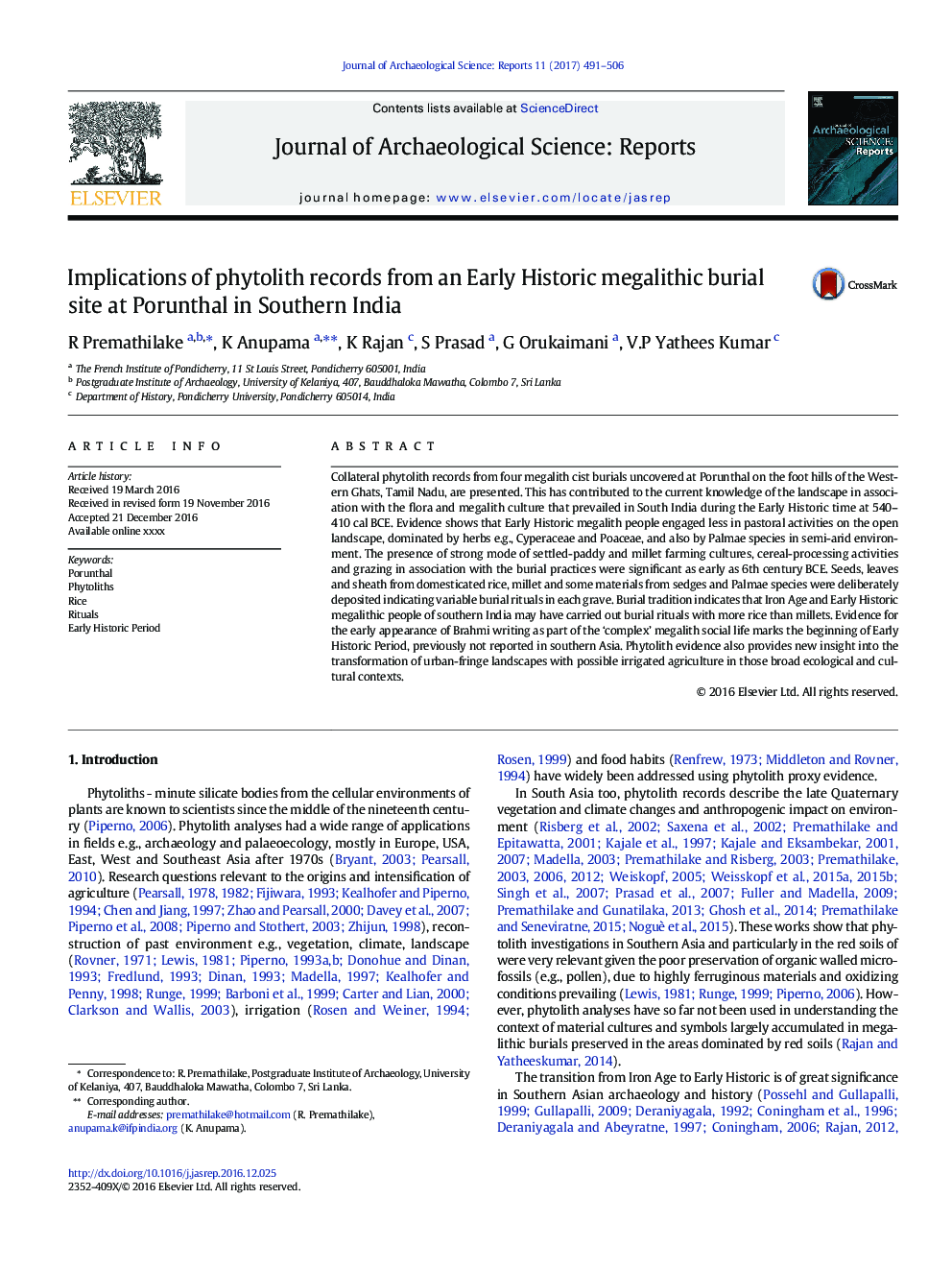| Article ID | Journal | Published Year | Pages | File Type |
|---|---|---|---|---|
| 5112582 | Journal of Archaeological Science: Reports | 2017 | 16 Pages |
Abstract
Collateral phytolith records from four megalith cist burials uncovered at Porunthal on the foot hills of the Western Ghats, Tamil Nadu, are presented. This has contributed to the current knowledge of the landscape in association with the flora and megalith culture that prevailed in South India during the Early Historic time at 540-410Â cal BCE. Evidence shows that Early Historic megalith people engaged less in pastoral activities on the open landscape, dominated by herbs e.g., Cyperaceae and Poaceae, and also by Palmae species in semi-arid environment. The presence of strong mode of settled-paddy and millet farming cultures, cereal-processing activities and grazing in association with the burial practices were significant as early as 6th century BCE. Seeds, leaves and sheath from domesticated rice, millet and some materials from sedges and Palmae species were deliberately deposited indicating variable burial rituals in each grave. Burial tradition indicates that Iron Age and Early Historic megalithic people of southern India may have carried out burial rituals with more rice than millets. Evidence for the early appearance of Brahmi writing as part of the 'complex' megalith social life marks the beginning of Early Historic Period, previously not reported in southern Asia. Phytolith evidence also provides new insight into the transformation of urban-fringe landscapes with possible irrigated agriculture in those broad ecological and cultural contexts.
Keywords
Related Topics
Social Sciences and Humanities
Arts and Humanities
History
Authors
R Premathilake, K Anupama, K Rajan, S Prasad, G Orukaimani, V.P Yathees Kumar,
